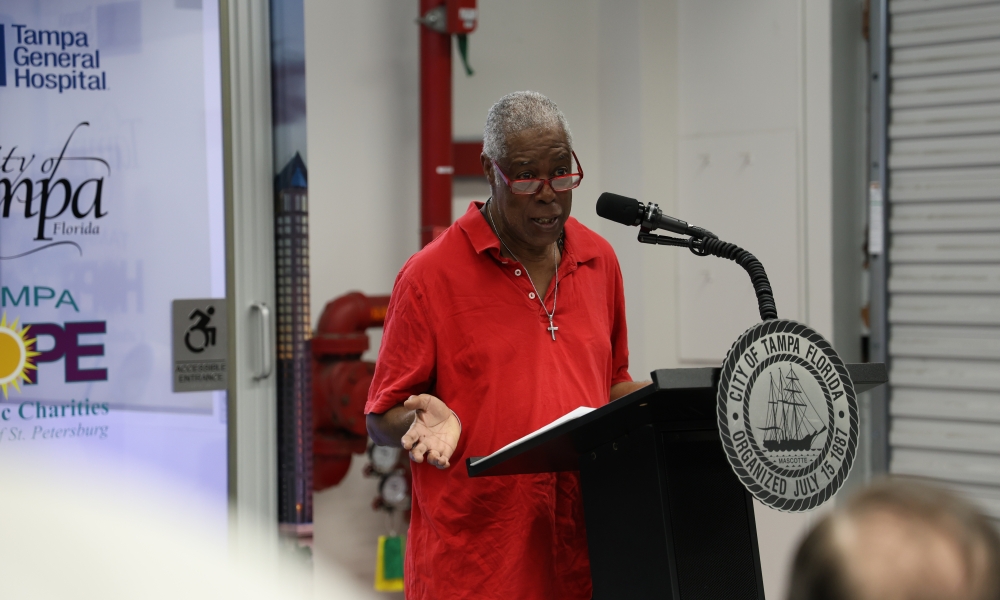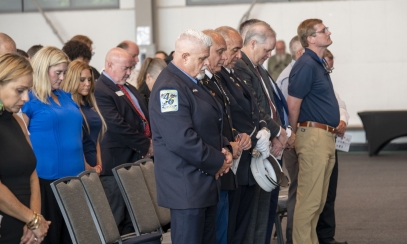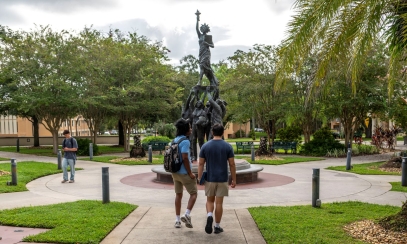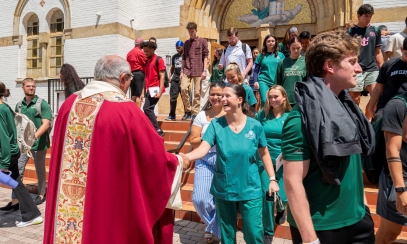
On-site Telehealth Removes Obstacles for Homeless
In a warehouse at Tampa Hope, tears welled up in Sam Harris’s eyes when asked about the latest way the Catholic Charities-run homeless shelter has helped him—with an OnMed CareStation.
In a warehouse at Tampa Hope, tears welled up in Sam Harris’s eyes when asked about the latest way the Catholic Charities-run homeless shelter has helped him—with an OnMed CareStation.
Last week, Catholic Charities Diocese of Saint Petersburg, in partnership with the City of Tampa and Tampa General Hospital, unveiled the CareStation, which brings telehealth to the shelter’s residents in an unprecedented way.
“Tampa Hope is the first homeless shelter in America to offer this on-site care for its nearly 235 residents,” according to a City of Tampa news release.
When Tampa Hope clients need care, they can step into the small, indoor structure, which one patient uses at a time, said Maggie Rogers, Catholic Charities Diocese of Saint Petersburg executive director.
Pressing “start” on the screen inside the box initiates a video call with a certified nursing assistant, who starts the patient’s intake before connecting the patient to a physician.
Devices in the CareStation “check your blood pressure, your weight,” Harris said, among other real-time vitals clinicians can assess.
“A little camera pops down from the ceiling if you want to have your skin looked at, or it looks in your eyeball,” said Rogers.
Using its high-definition thermal imaging cameras, it can also look at your ears and throat, Tampa’s news release says. And after a patient’s visit ends, “the CareStation locks and automatically runs a sanitization cycle to prepare for the next patient.”
Having the CareStation, which was funded by Tampa General and The McNamara Foundation, eliminates obstacles that prevent the homeless from accessing routine medical care, Rogers said.
One of the obstacles is transportation, said Harris.
“If you’re 15 minutes late for your doctor, you’ve got to reschedule,” he said.
Now, Rogers said, residents know “that they can have routine medical care and that they don’t have to call 911 to see a primary care physician.”
She hopes Tampa Hope is only the first of many organizations to use a CareStation, as it would be simple, she said, for others to follow the City of Tampa’s lead.
All you need for an OnMed CareStation to work, she said, is wifi and an electrical outlet.
She also hopes it will help the clients Tampa Hope serves stay healthy, “which in turn will help their sustainability once they move out from here,” she said.
And Harris believes it’s going to make a difference.
“There’s a lot of people here that can benefit,” he said.
Catholic Charities and Tampa Hope are supported in part by the Catholic Ministry Appeal. To learn more about the Catholic Ministry Appeal or to make a contribution, please visit www.dosp.org/catholicministryappeal.



